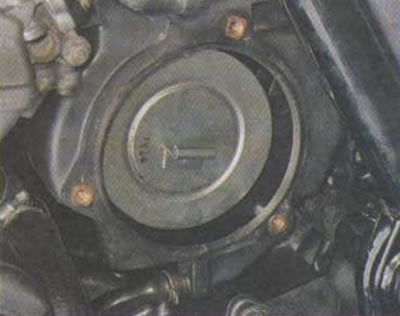The fuel tank is welded from several parts stamped from sheet steel. The inner surface of the tank is galvanized for protection against corrosion.

The filler neck is closed with a lid locked with a key.

To protect against overfilling of fuel in the neck of the fuel tank there is a drain pipe, brought down from the left side of the fuel tank, to which a rubber tube is attached, which, in turn, goes under the motorcycle frame.
The parts of the fuel system are interconnected by rubber petrol-resistant hoses, secured with spring clamps.
The motorcycle uses a vacuum fuel valve with three positions.

1. ON - the main position of the fuel valve with the engine running. During parking, the valve is automatically closed, when the engine is started, the vacuum from the intake manifold of the first cylinder is transmitted through the tube to the fuel valve membrane, and it opens the way for fuel.

2. OFF - the fuel cock is closed.

3. RES - reserve operating mode; switching to it is necessary when there are about three liters of fuel left in the fuel tank.
The motorcycle uses four carburetors (CV VP22) constant vacuum with horizontal flow manufactured by Keihin (Japan) combined into a single unit (bar carburetors).

Air filter - paper, dry, with a replaceable filter element.

The air filter housing is made of plastic.
The pipes are made of rubber and tightened with screw clamps.

